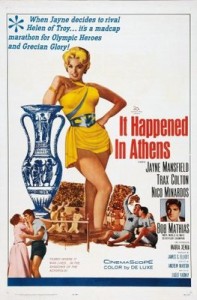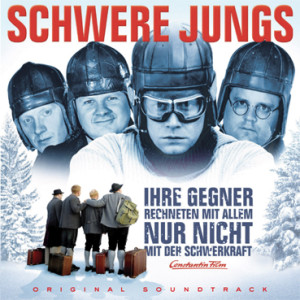Yesterday, the still unnamed mascot of the Rio 2016 Olympics was presented to the world. As always, the responses are mixed, some calling it “a yellow cat-like thing“, others declaring it “cute, cuddly and capable of brining in hundreds of millions in revenue“, while it reminds some of us here of Top Cat.
The new Olympic (left) and Paralympic mascots – still to be named.
A mascot is originally a good luck charm, which was also its original role at the Olympics. For the 1968 Winter Olympics in Grenoble, a skier named Schuss made its appearance. The stylized man was created unofficially for the Games. The first official mascot followed four years later, in Munich: a colored dachshund named Waldi. The marathon course that year was modelled to look like the profile of the dog. From Innsbruck 1976, where Schneemann was used to ensure a snow-filled Games, all Olympics have had mascots. Besides a good luck charm, they’ve figured in opening ceremonies, are used for distraction during breaks and – of course – to boost the sales of Olympic memorabilia.
In true OlympStats style, we could present you a list of all Olympic mascots here, but there’s several places on the web that already do a comendable job. In particular, the IOC has two reference documents (Summer, Winter) that extensively describe and depict all mascots.
So, instead I’ve listed my personal top three of best and worst Olympic mascots.
Top 3 best Olympic mascots
My favorite Olympic mascot: Hodori from Seoul 1988.
- Hodori 1988 – a tiger with a Korean hat, is simple, not too cliché, and funny.
- Quatchi 2010 – based on the legendary sasquatch from native mythology, this furry little(?) fellow apparently still need to wear earmuffs.
- Misha 1980 – the first mascot to be widely used, Misha is simple but very recognizable.
Top 3 worst Olympic mascots
Worst Olympic mascot by a clear margin: Atlanta 1996’s Izzy
- Izzy 1996 – probably the most ridiculed Olympic mascot of all time, its original name was tellingly “Whatizit”. Still, nobody knows what it is.
- Wenlock 2012 – a droplet of steel with one eye, he loses out to Izzy due to fact his name is taken from the Much Wenlock Games, one of the source of inspiration for Pierre de Coubertin
- Magique 1992 – unlike the top entries, Magique is actually vagualy recognizble, described by the IOC as an “imp”. But despite its name, it fails to inspire me to view magical things.
Did I miss a horrible one? Gloss over the best mascot of all time? Feel free to let us know in the comments.


